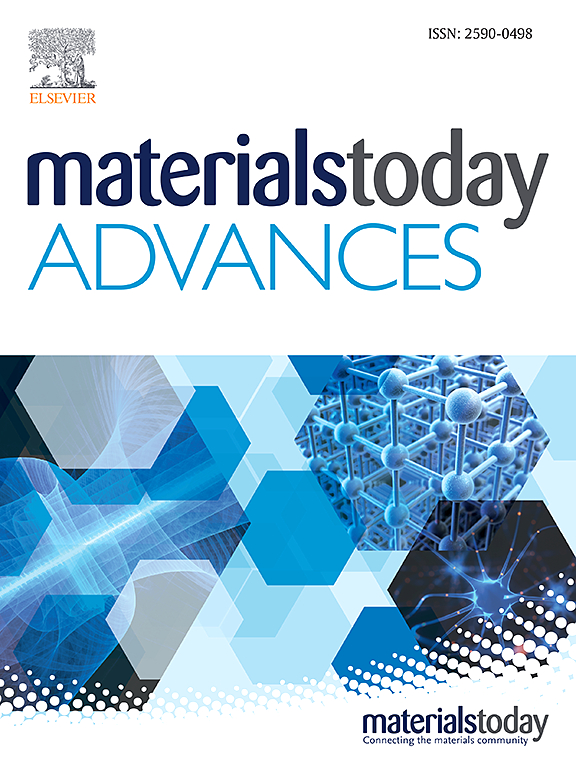Non-resonant phase sensitive approach for time resolved microwave conductivity in photoactive thin films
IF 8
2区 材料科学
Q1 MATERIALS SCIENCE, MULTIDISCIPLINARY
引用次数: 0
Abstract
Time-resolved microwave conductivity (TRMC) is a contactless technique utilized for the investigation of carrier density, transport properties, trapping phenomena, and recombination parameters in charge transport materials. Traditional TRMC methods rely on resonant cavities or resonators, which impose limitations on the frequency range and accuracy of measurements. In this study, we introduce an innovative approach that employs a non-resonant coplanar transmission line and a microwave interferometric detection scheme to investigate the phase-dependent complex microwave conductivity. Additionally, we demonstrate unique calibration techniques for determining the absolute complex microwave conductivity by combining transient photoconductivity (TPC) and electron spin resonance (ESR) as complementary methods. By utilizing a phase-sensitive microwave interferometer, our detection scheme significantly enhances measurement sensitivity and eliminates the need for a resonant cavity. This broadband detection system enables direct measurement of phase-dependent changes in film conductivity (Δσ). Moreover, it allows us to measure subtle variations in sample photoconductivity upon optical excitation and accommodates greatly restricted volumes (∼nL) consistent with typical device sizes. Here we demonstrate the utility of this technique on a series of poly(3-hexylthiophene) (P3HT) and the electron acceptor [6,6]-phenylC61-butyric acid methyl ester (PCBM) thin films with varying concentrations of PCBM and film thickness.用非共振相敏方法实现光活性薄膜的时间分辨微波传导性
时间分辨微波传导性(TRMC)是一种非接触式技术,用于研究电荷传输材料中的载流子密度、传输特性、捕获现象和重组参数。传统的 TRMC 方法依赖于谐振腔或谐振器,这对频率范围和测量精度造成了限制。在本研究中,我们引入了一种创新方法,利用非谐振共面传输线和微波干涉仪检测方案来研究随相位变化的复合微波传导性。此外,我们还展示了独特的校准技术,通过结合瞬态光电导(TPC)和电子自旋共振(ESR)这两种互补方法来确定绝对复合微波电导率。通过利用相位敏感微波干涉仪,我们的检测方案大大提高了测量灵敏度,并且无需谐振腔。这种宽带检测系统可以直接测量薄膜电导率(Δσ)随相位的变化。此外,它还允许我们测量光激发时样品光电导率的微妙变化,并能容纳与典型器件尺寸一致的极小体积(∼nL)。在此,我们展示了该技术在一系列聚(3-己基噻吩)(P3HT)和电子受体 [6,6]-phenylC61-butyric acid methyl ester (PCBM) 薄膜上的应用,这些薄膜的 PCBM 浓度和厚度各不相同。
本文章由计算机程序翻译,如有差异,请以英文原文为准。
求助全文
约1分钟内获得全文
求助全文
来源期刊

Materials Today Advances
MATERIALS SCIENCE, MULTIDISCIPLINARY-
CiteScore
14.30
自引率
2.00%
发文量
116
审稿时长
32 days
期刊介绍:
Materials Today Advances is a multi-disciplinary, open access journal that aims to connect different communities within materials science. It covers all aspects of materials science and related disciplines, including fundamental and applied research. The focus is on studies with broad impact that can cross traditional subject boundaries. The journal welcomes the submissions of articles at the forefront of materials science, advancing the field. It is part of the Materials Today family and offers authors rigorous peer review, rapid decisions, and high visibility.
 求助内容:
求助内容: 应助结果提醒方式:
应助结果提醒方式:


